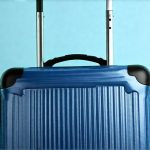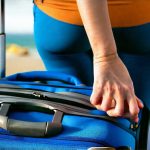Traveling is often synonymous with adventure, exploration, and creating lasting memories. However, for individuals managing urinary conditions – whether it’s incontinence, frequent urination, interstitial cystitis (IC), overactive bladder (OAB), or post-surgical considerations – the prospect of travel can bring about anxiety related to access to restrooms, dietary triggers, and maintaining a comfortable routine. The disruption to daily life inherent in travel demands careful planning, and often overlooked is the crucial aspect of meal planning that directly impacts urinary health. This isn’t about deprivation; it’s about making informed choices that support bladder control and overall comfort while enjoying the journey. A little forethought can transform potentially stressful trips into enjoyable experiences without compromising well-being.
Many people assume travel discomfort is unavoidable, but proactive strategies centered around food and hydration can significantly mitigate issues. Understanding how certain foods and beverages affect your bladder is the first step. What triggers one person’s symptoms may not affect another, so personalization is key. This means knowing your individual sensitivities and packing or choosing meals accordingly. Beyond simply avoiding trigger foods, it’s also about incorporating supportive options that promote hydration and potentially soothe the urinary tract. The goal isn’t to eliminate all enjoyment from travel dining – it’s to navigate choices thoughtfully, ensuring a smoother, more comfortable journey for those prioritizing their urinary health.
Dietary Considerations for Urinary Health During Travel
Planning meals during travel requires adapting your usual dietary habits to accommodate varying access and options. It’s often easier to control what you eat when traveling if you pack some of your own snacks and even simple meal components. This is particularly important if you have a well-defined list of foods that aggravate your urinary symptoms. For instance, if citrus fruits consistently cause flare-ups, bringing along alternative fruit choices like pears or blueberries can be incredibly helpful. Similarly, pre-packaged trail mixes with bladder-friendly seeds (sunflower, pumpkin) and dried fruits offer convenient snacking options while on the go. **Being prepared is paramount.** Understanding which foods impact your bladder requires self-observation, potentially using a food diary to identify patterns; consider exploring body awareness meals to help with this process.
The challenge often lies in navigating restaurant meals, especially when visiting new places where ingredients aren’t always clearly listed or dietary restrictions can be difficult to communicate. Don’t hesitate to ask questions! Most restaurants are happy to accommodate requests if you explain your needs politely and specifically. Requesting that sauces be served on the side, opting for grilled instead of fried foods, and choosing simpler preparations can all contribute to a more bladder-friendly dining experience. Remember to prioritize hydration alongside food choices; dehydration concentrates urine, potentially exacerbating urinary symptoms. It’s important to build hydration habits that support your overall urinary health.
A helpful strategy is to research restaurants in your destination beforehand, looking for places with online menus or that specifically cater to dietary restrictions. Apps and websites dedicated to finding allergy-friendly or health-conscious options can also be invaluable resources. Consider packing a reusable water bottle to encourage consistent hydration throughout the day, regardless of where you are. Ultimately, successful travel meal planning is about striking a balance between enjoying new culinary experiences and protecting your urinary health.
Identifying Personal Triggers
Understanding which foods and drinks impact your bladder is fundamental. This requires some self-observation and potentially keeping a food diary for a period before travel to identify patterns. Common culprits often include:
- Caffeine (coffee, tea, soda)
- Alcohol
- Carbonated beverages
- Spicy foods
- Artificial sweeteners
- Acidic fruits and vegetables (tomatoes, citrus)
- Chocolate
It’s important to note that trigger lists are highly individual. What bothers one person may not affect another. A food diary should record what you eat or drink, the time of consumption, and any associated urinary symptoms – frequency, urgency, burning sensations, etc. Over time, patterns will emerge, revealing which foods to limit or avoid during travel. This isn’t about permanent restriction; it’s about making informed choices based on your body’s response.
The process of identifying triggers can be further refined by employing an elimination diet, under the guidance of a healthcare professional if possible. This involves removing suspected trigger foods from your diet for a period and then gradually reintroducing them one at a time, observing for any changes in urinary symptoms. **This method allows you to pinpoint specific sensitivities with greater accuracy.** To prepare for potential flare-ups, having access to low-rescue meals can provide comfort and support.
Finally, remember that stress itself can impact bladder function. Travel inherently involves some level of stress, so it’s important to factor this into your planning and potentially adjust your dietary choices accordingly. For example, if you know anxiety tends to worsen your OAB symptoms, consider reducing caffeine intake even further during travel.
Hydration Strategies on the Go
Adequate hydration is essential for overall health, but particularly crucial for those managing urinary conditions. While it might seem counterintuitive to drink more when dealing with frequency or urgency, dehydration actually concentrates urine, irritating the bladder and potentially worsening symptoms. The key is to find a balance – consistent sipping throughout the day rather than large volumes at once.
- Carry a reusable water bottle and refill it frequently.
- Set reminders on your phone to prompt regular hydration.
- Choose hydrating foods like watermelon, cucumbers, and celery.
- Avoid excessive caffeine and alcohol, which have diuretic effects.
- Be mindful of climate; hot weather increases fluid loss.
Consider the type of fluids you’re consuming as well. Water is always the best choice, but herbal teas (non-caffeinated) can also be hydrating and soothing. Some individuals find that cranberry juice helps prevent urinary tract infections, although its impact on IC symptoms is debated – discuss with a healthcare professional. **Don’t wait until you feel thirsty to drink; thirst is often a sign of existing dehydration.** When traveling frequently, consider utilizing hydration snacks to stay refreshed.
Portable Food Options & Packing Tips
Travel often limits access to fresh, healthy food options. Therefore, packing portable snacks and meal components can be incredibly beneficial. This allows you to control your intake and minimize exposure to potential triggers. Some excellent choices include:
- Oatmeal packets (plain, unsweetened)
- Nuts and seeds (sunflower, pumpkin, almonds)
- Dried fruit (pear, blueberries – avoiding citrus)
- Whole grain crackers with nut butter
- Protein bars (check ingredients for bladder irritants)
- Pre-cut vegetables (carrots, celery sticks)
When packing, consider using reusable containers to minimize waste and ensure portability. A small cooler bag can help keep perishable items fresh during travel. If you’re flying, be aware of TSA regulations regarding food and liquids. **Packing a variety of options prevents boredom and encourages consistent healthy snacking.** To reduce potential stress while traveling, planning with travel days in mind can be very helpful.





















